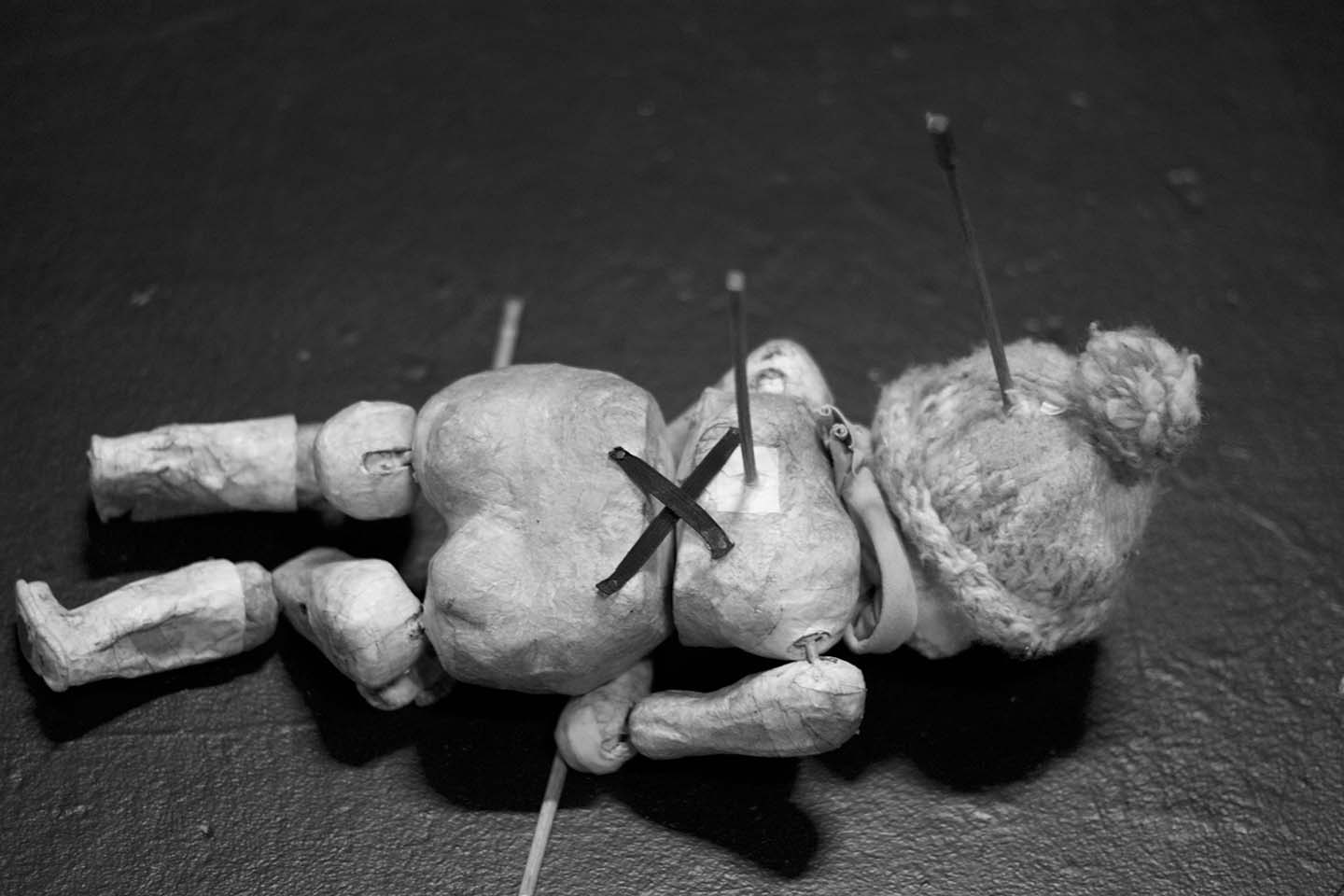Changing times and changing technology can sometime steal from us things we once had. And sometimes what they steal is hard to replace. Consider the means we have all had and used for knowing the world, and knowing what is real. The common expression is “seeing is believing.” The courts rely on witness testimony and reject as hearsay second-hand evidence. And in a range of moral and religious settings, we emphasize the importance of bearing witness.

Photographs today are from my favorite Chilean Puppet Theatre Group SILENCIO BLANCO. Make believe where it belongs: in art and on the stage.
There is surely no question that first-hand viewing of an event or a situation is enormously compelling. Consider a peculiar Gedanken-experiment: imagine that we have you stand at the edge of a roof, blindfolded, and we urge you to step off the edge. We race to reassure you, though, that you will fall only 18 inches, because there is a safe and secure net positioned so that you are in no danger. We tell you this. We arrange for your best friend to tell you this. We arrange for your spiritual advisor to tell you this. But no matter who tells you, surely you would be more comfortable if you could lift the blindfold and inspect the safety net for yourself. There really is no substitute for first-hand, visual evidence.

This reliance on first hand-experience, and the powerful visual evidence it provides, is at risk from multiple threats. In a recent NYT editorial on partisan perception, Paul Krugman lamented that in our insanely polarized world, we have to reverse the original aphorism, because now “Believing is Seeing.” In other words, people’s opinions and beliefs are so heavily entrenched that they are ready to discount, or reinterpret, or flatly refuse the evidence of their own eyes. We see this, for example, in people’s refusing to acknowledge the videos by eyewitnesses documenting the horrors and war crimes happening in Gaza, or the carnage wrought by Hamas on October 7th.

In some cases, people are so committed to their views, that they refuse even to consider, even to look at visual evidence that will challenge their view. In other cases people choose not to look, because seeing would be too painful. This is understandable, but means people underestimate, or fully fail to understand, the extent of the horrors. Importantly, in many cases, people flatly deny the truth of what they see and declare it faked. In still other cases, people are not permitted to see the visual evidence – a state or an agency monitoring what gets published, fully aware of the impact the prohibited visuals might have.
All of these points are fueled by the rapid advances in digital photography. Speaking as a well practiced montage artist, I, of course, have a sense of how easily images can be manipulated to make them show what you want to show. But what artistry allows is dwarfed by what digital technology makes available to anyone who wishes to manufacture bogus evidence for almost any claim they wish to advance.
Here is a short list what bad actors using AI have already managed to fake in order to influence the 2024 elections. We are stuck with a situation where multiple factors combine: videos are either true or false, and we are told that they are either true or false (irrespective of their actual truth content) and we ourselves have to decide if we trust them or not- a difficult task, magnified by our desire to believe those we generally trust and who tell us to adopt their claims.
(If you are interested in a deeper exploration of the legal issues around regulating media deep fakes in the political arena, the Brennan Center for Justice has a great overview here.)

What to do? The power and immediacy of first hand experience is likely hardwired into us, making us appallingly vulnerable to things like deep fakes. The apprehension that we encounter fake input and fall for it can lead to a different disaster, however: to avoid being duped, we end up trusting no input. The solution may require a set of new habits. When you encounter information, do what you can to check it against other independent sources. (This is, of course, increasingly difficult as Murdoch and Sinclair take over more and more media outlets.) When you encounter information, do what you can to scrutinize who it is that is supplying the information. Be wary of “semi-anonymous” reporting, with entries like “a new study has shown…” or “it is reported that.”

The deepest problem here, though, is that many people don’t have the skills, resources or the inclination to take these cautionary steps. And so instead, they simply latch onto a single source that they deem trustworthy. Unfortunately this choice may lead them to rely on lunatic propaganda. Furthermore, selecting different sources of input as trustworthy, with the young relying on social media videos coming directly out of Gaza, filmed by eyewitnesses, and the old relying on Fox news, or the main stream media that avoid showing videos of the suffering unfolding in Gaza in the first place, further feeds the political polarization (one only has to look at the generational divide in people’s taking sides in this conflict, which doesn’t come out of nowhere.) “Propaganda!” each societal subset shouts against the other.

The habit of seeing is believing cements in place views that may be based on incomplete or distorted input. Something that once was a valuable capacity can these days become an obstacle to the truth. I wish I had a solution.
Music to day is Quieter than Silence.
And here is a short clip of the puppetry, a performance called Pescador.







Sara Lee Silberman
Agree: Scary!